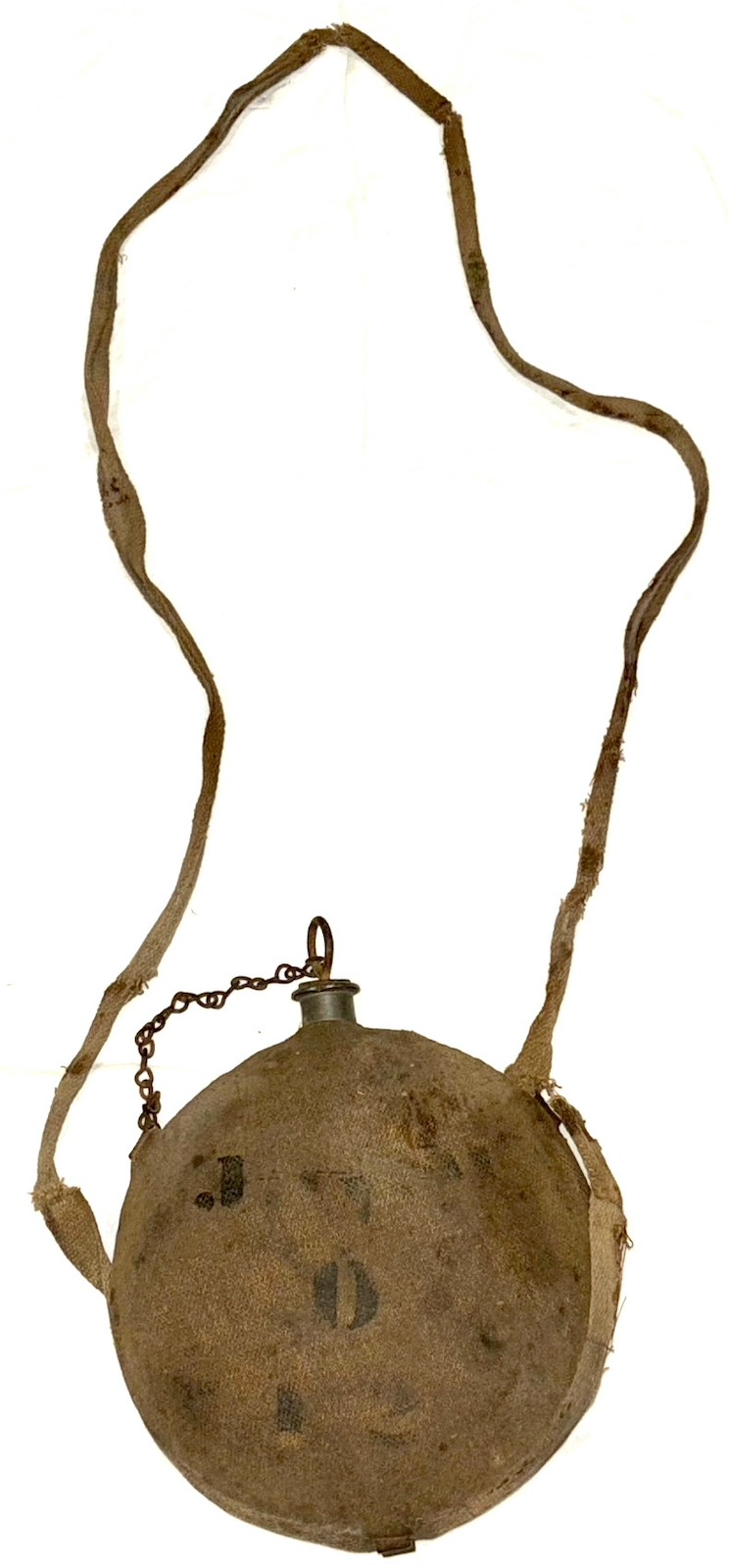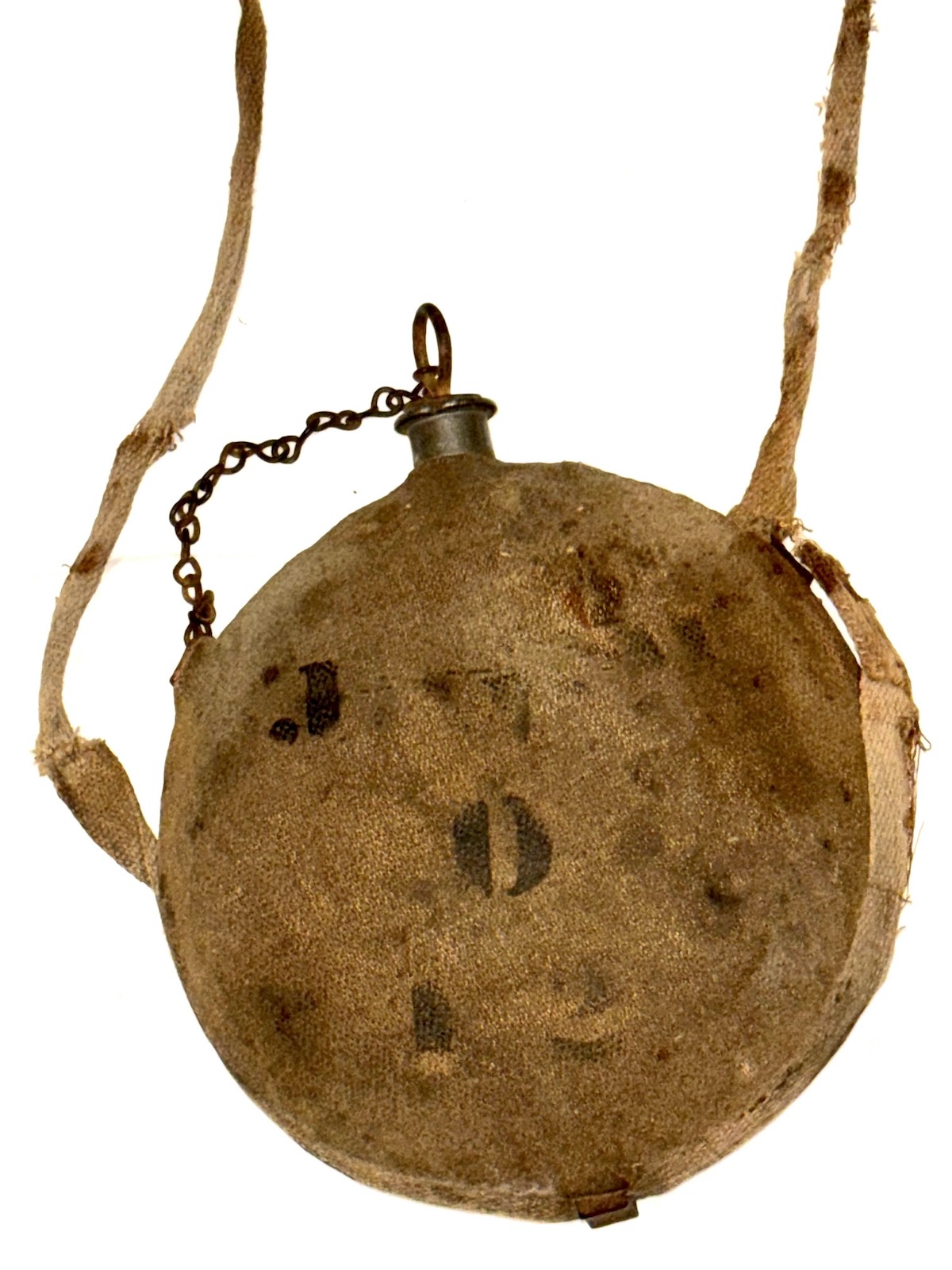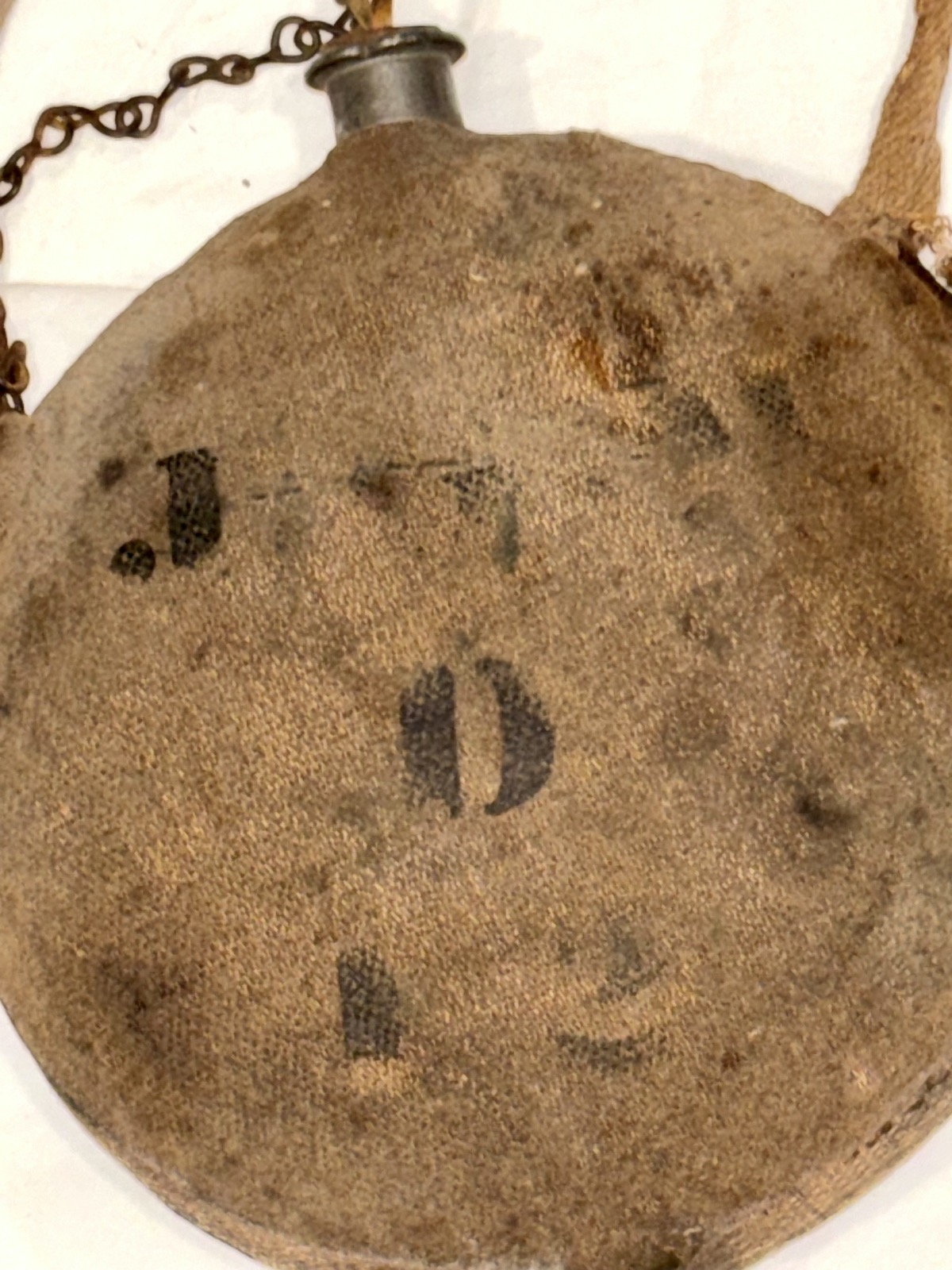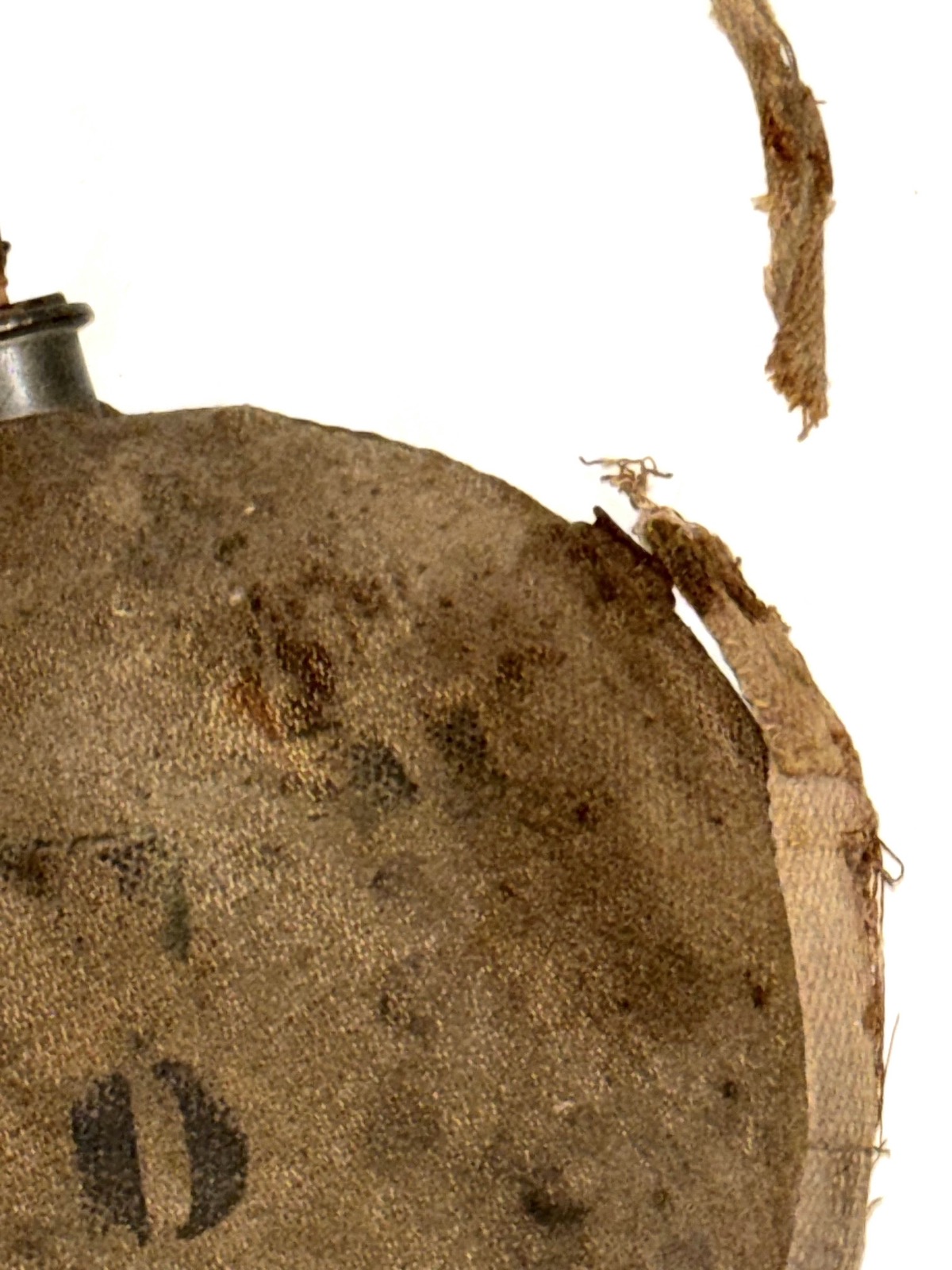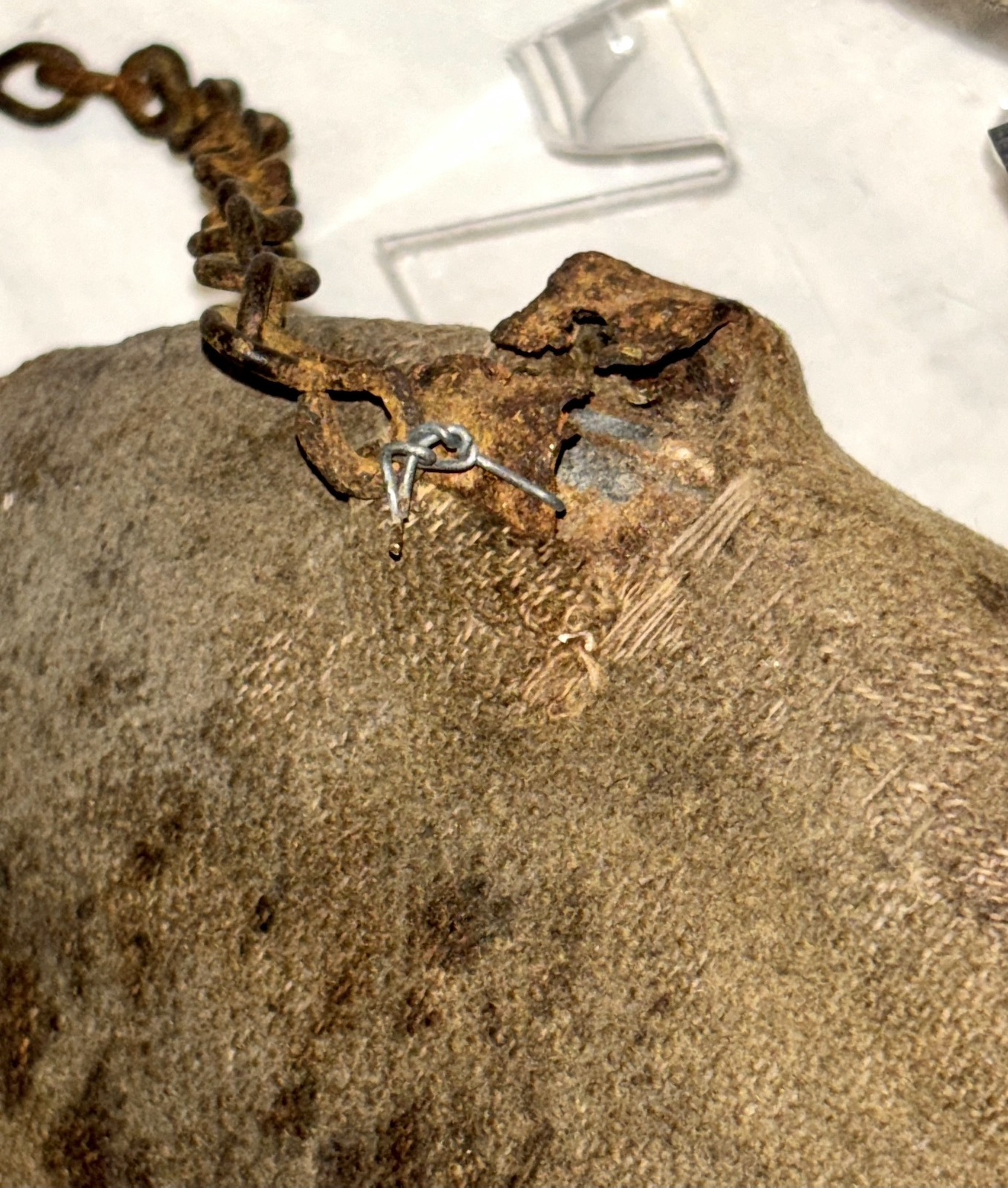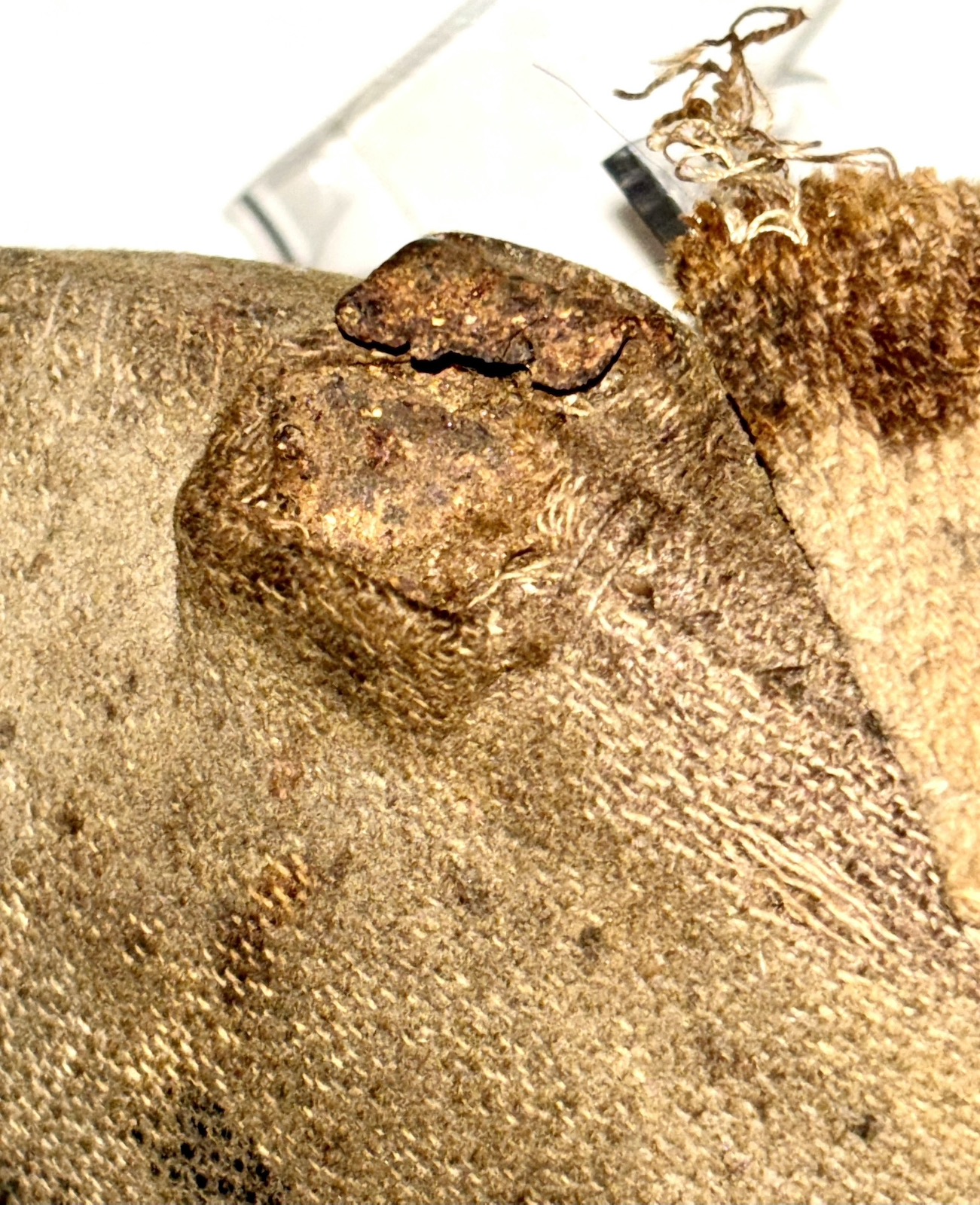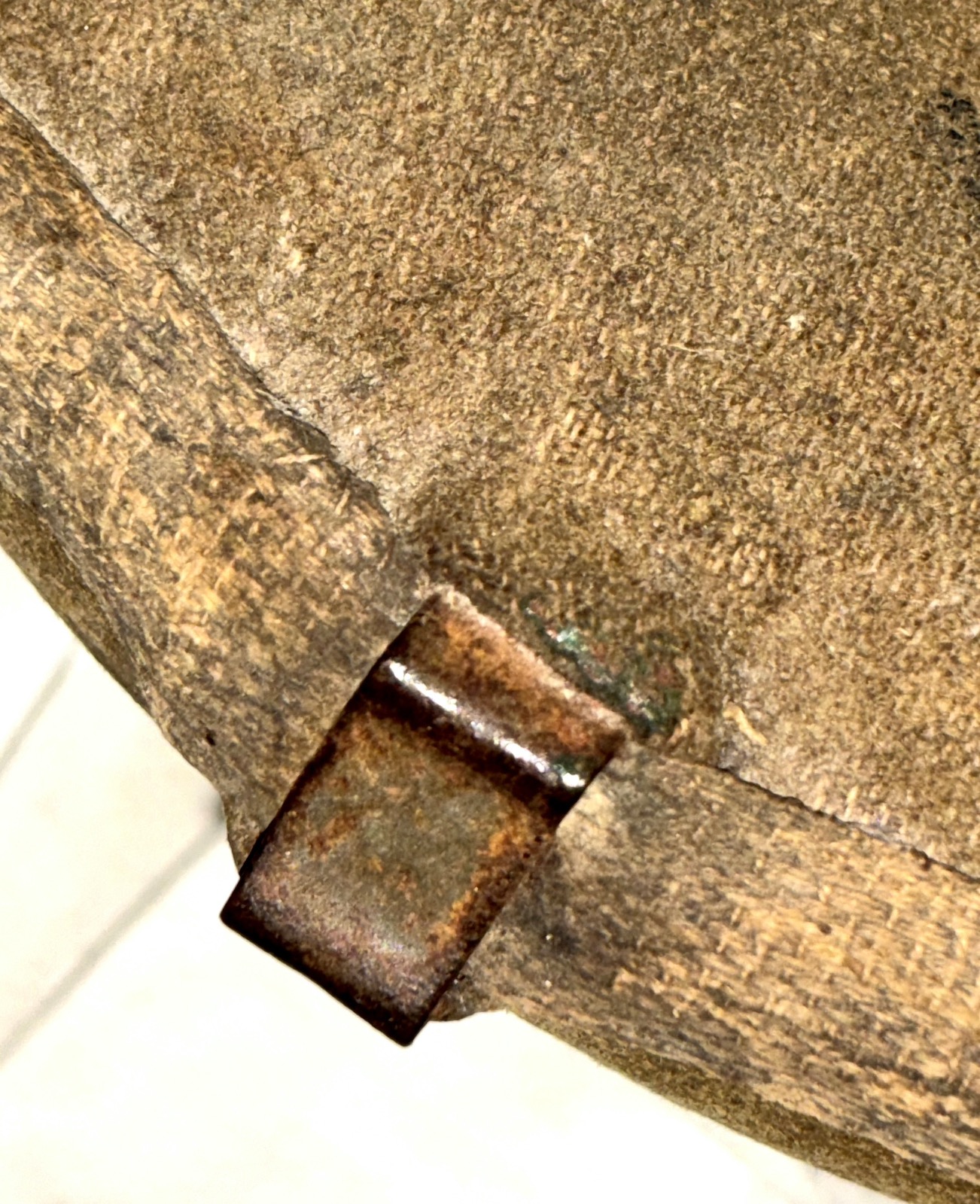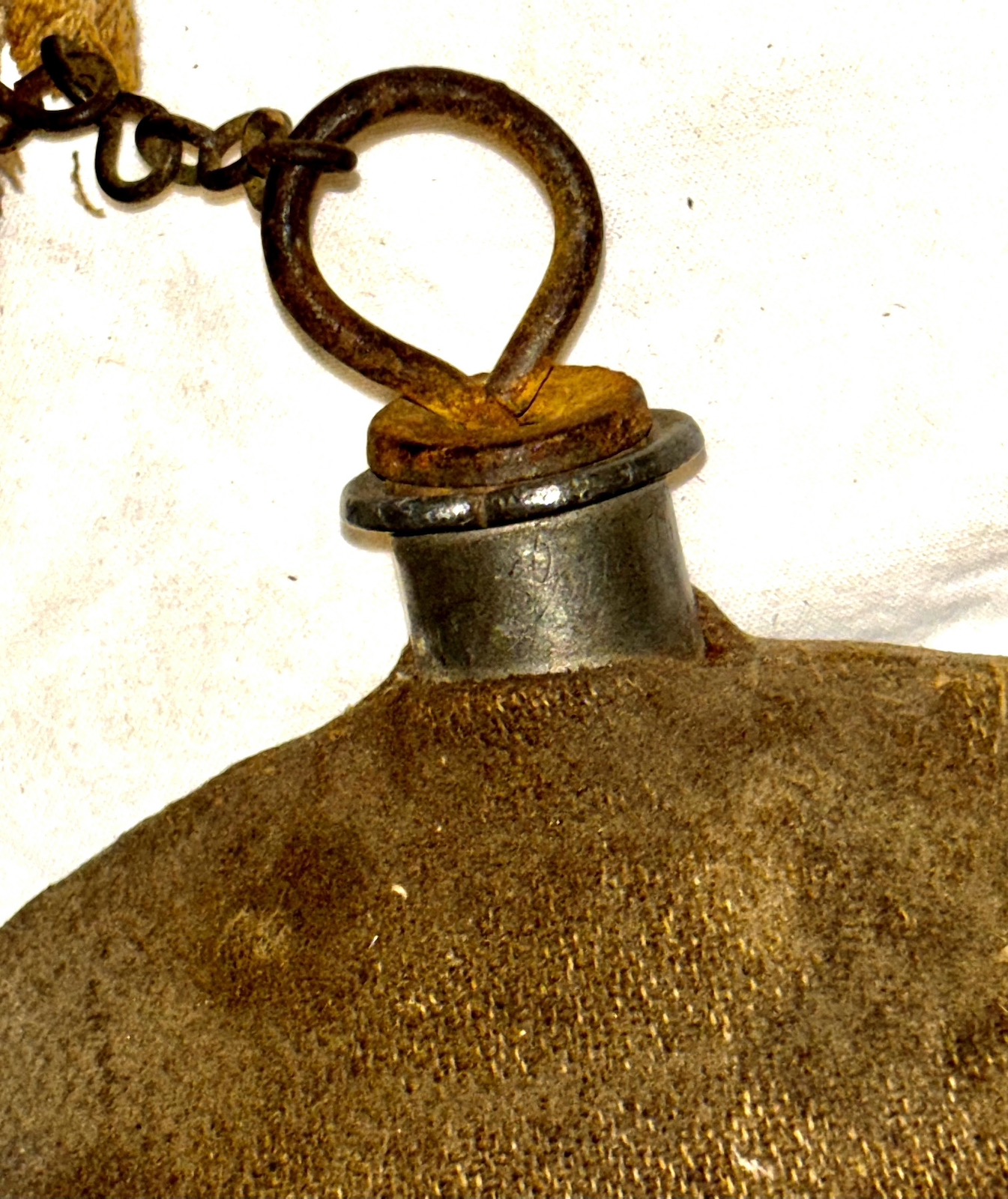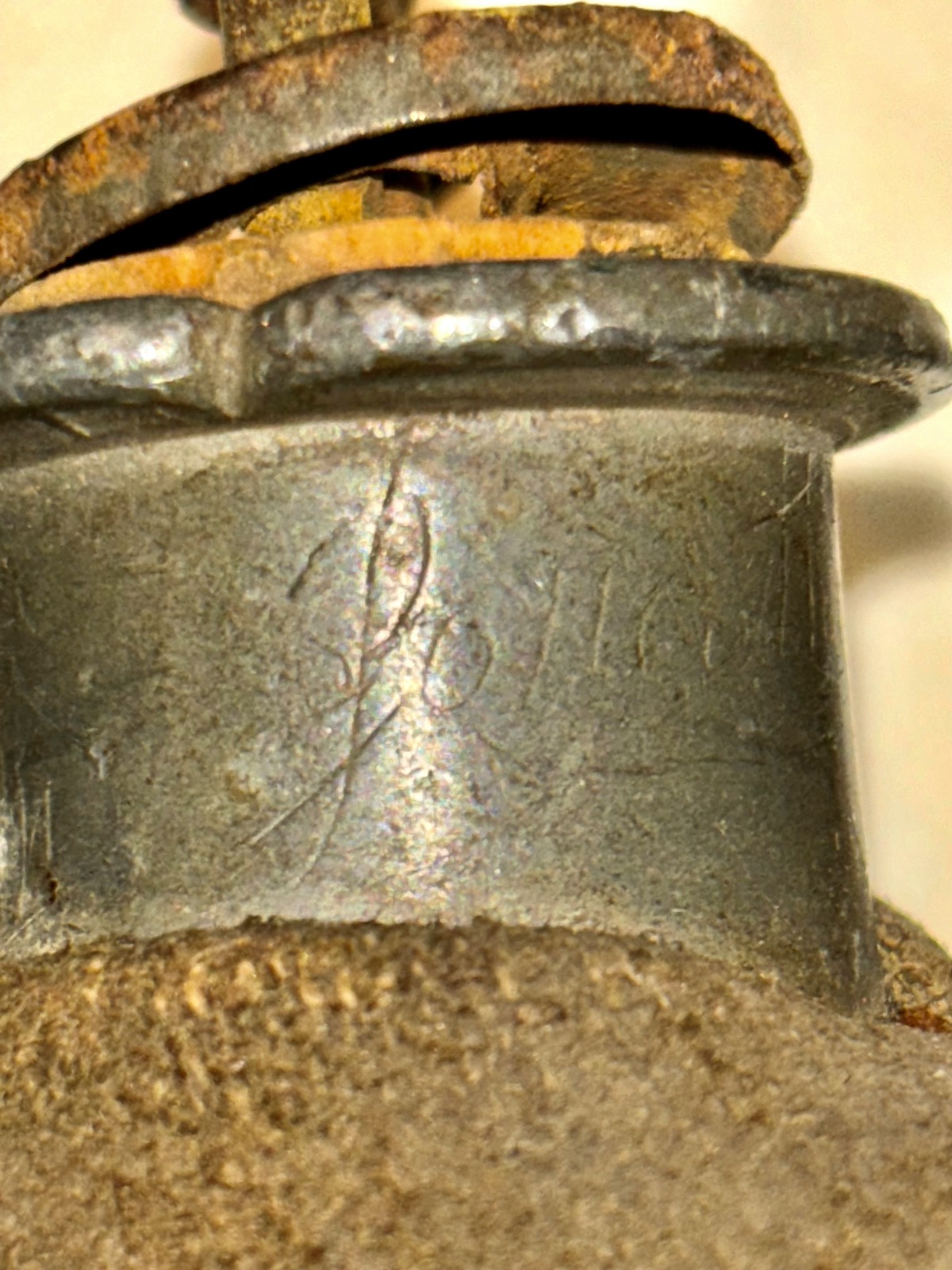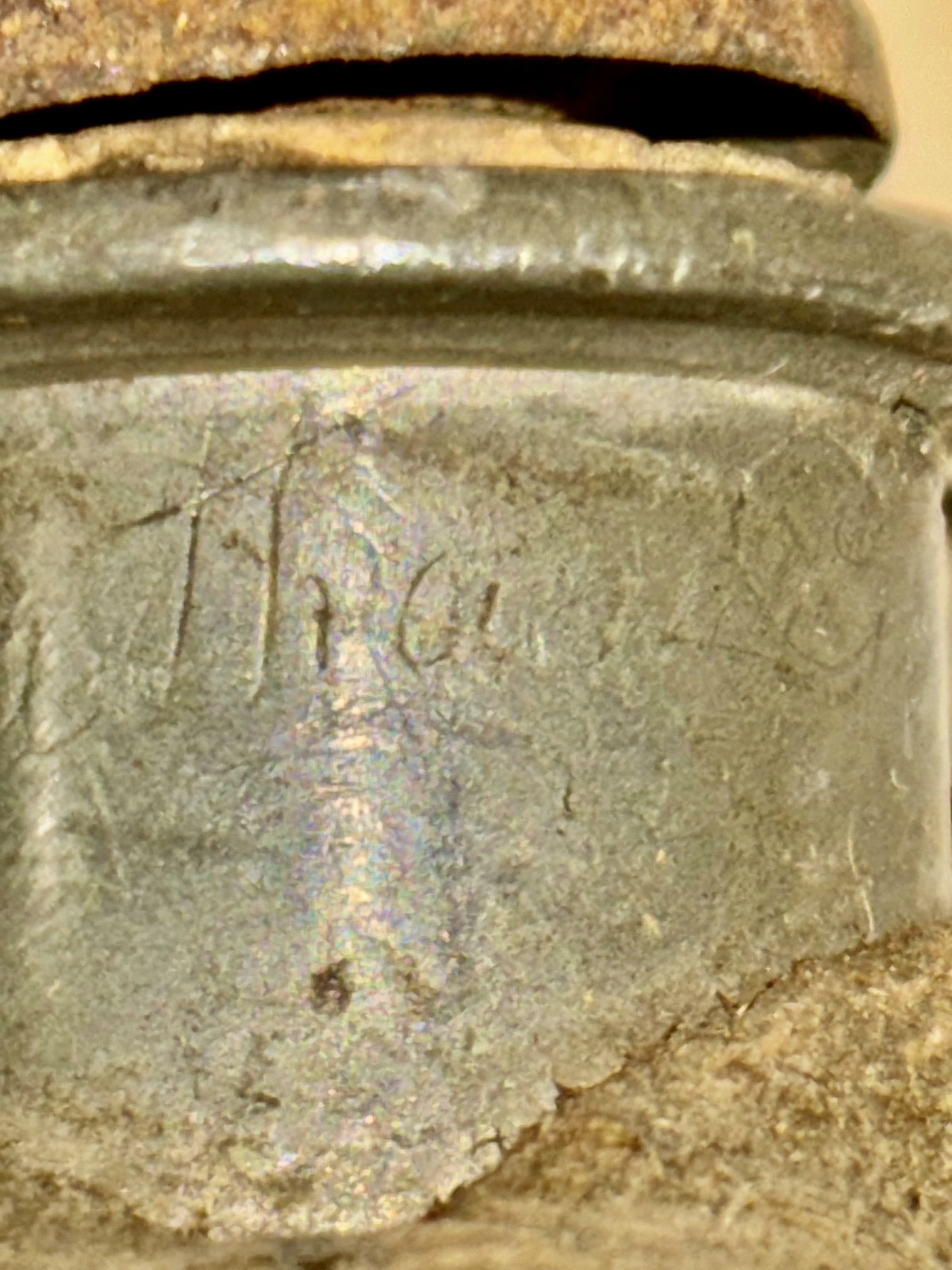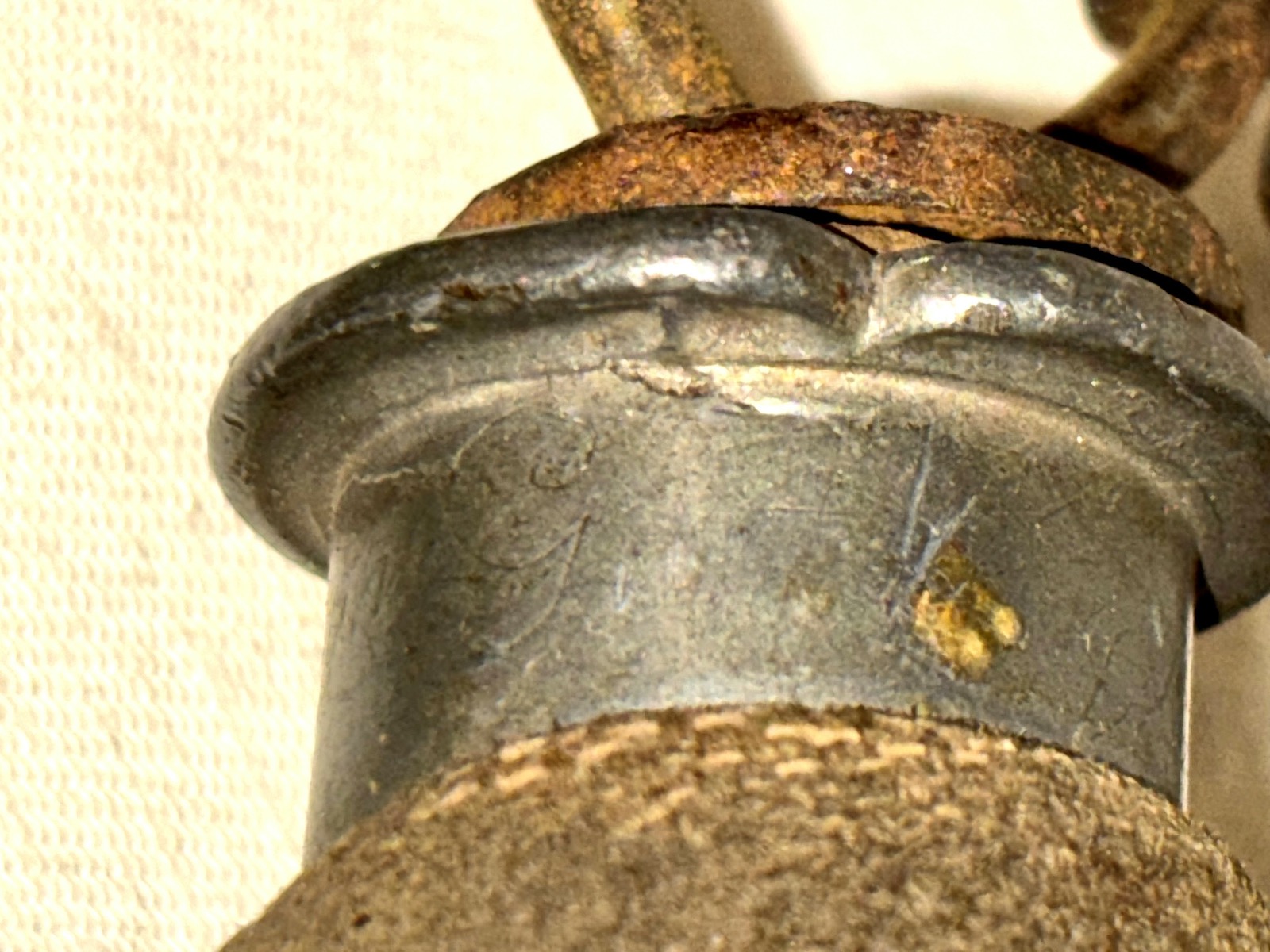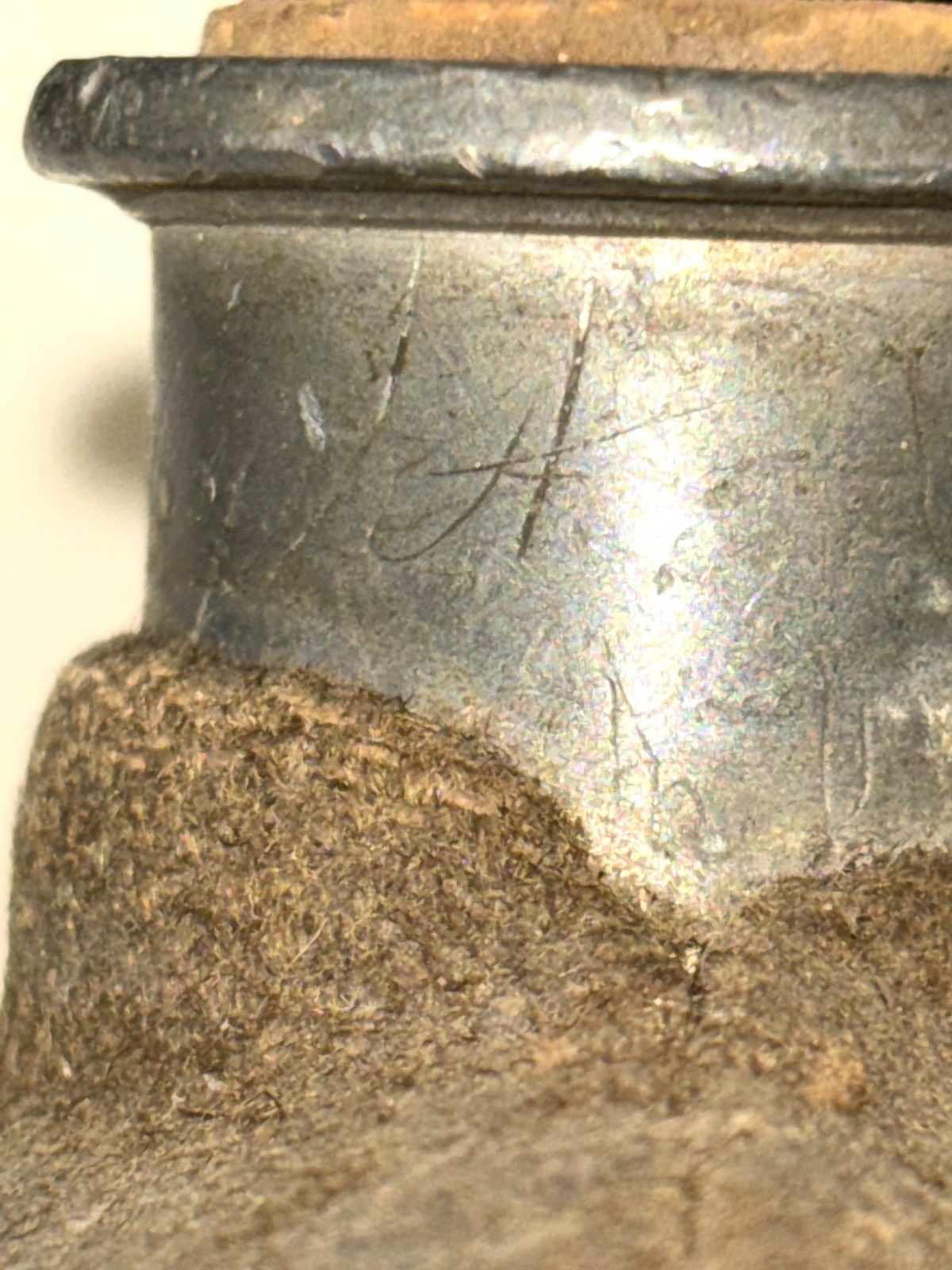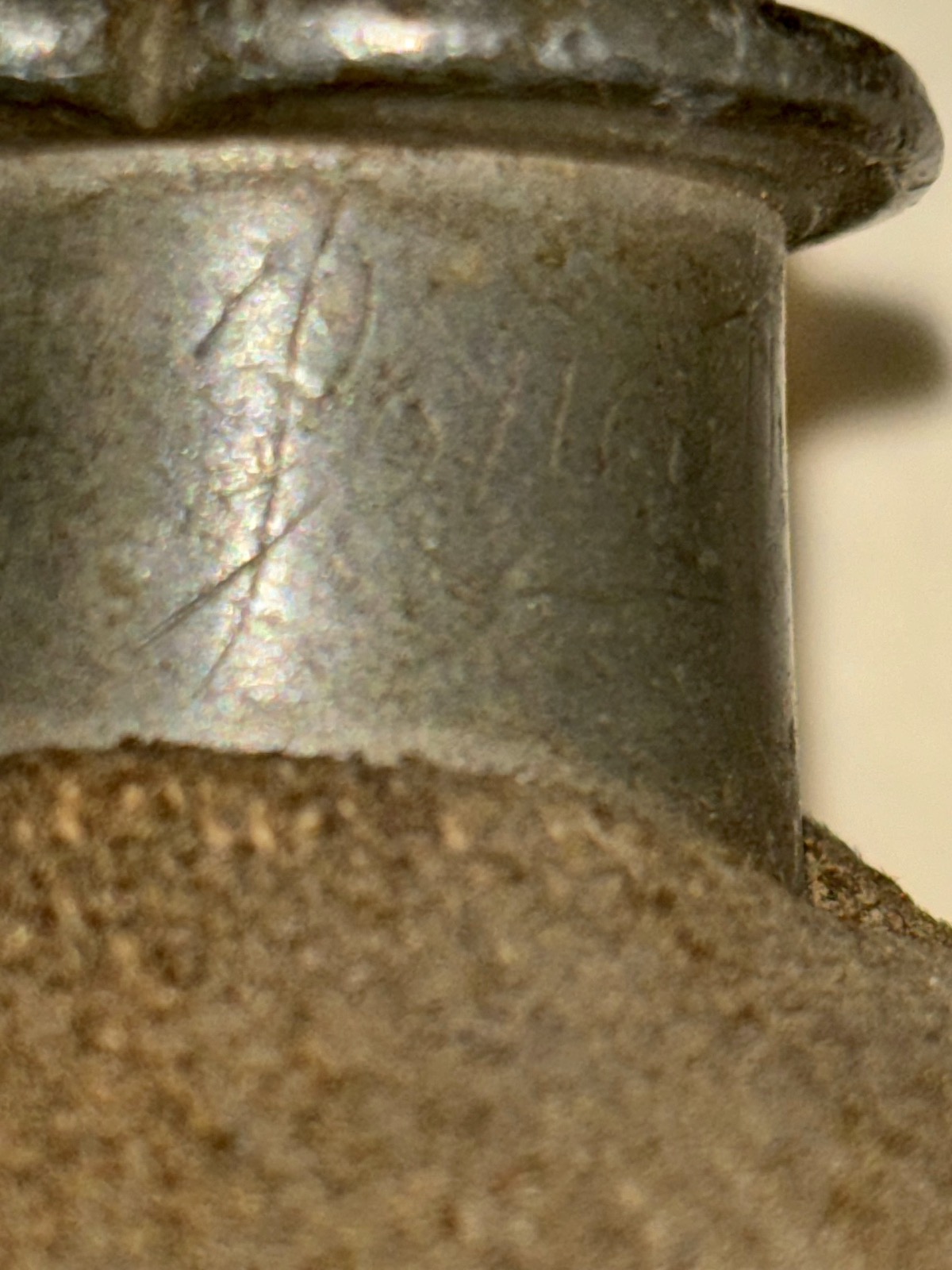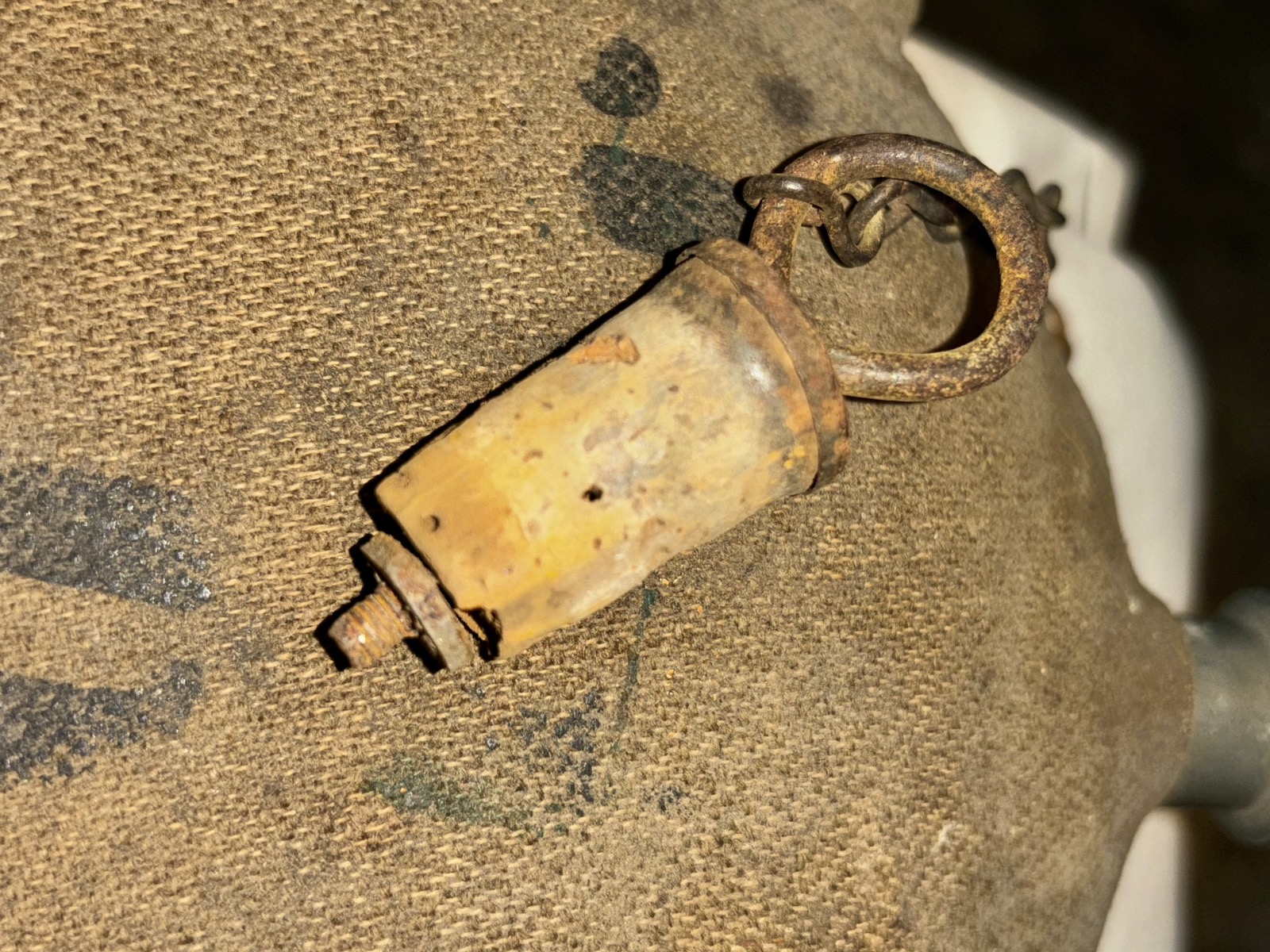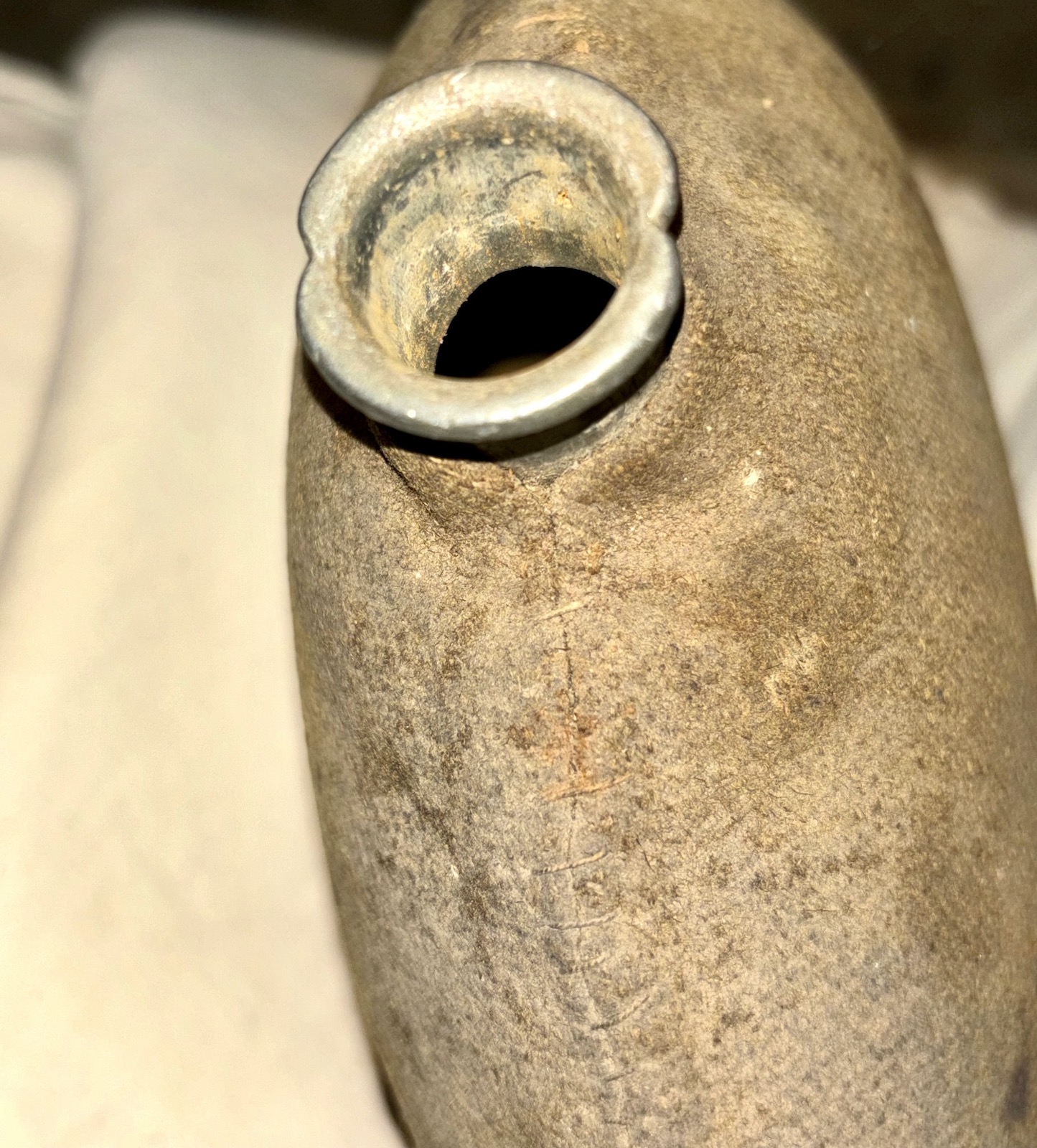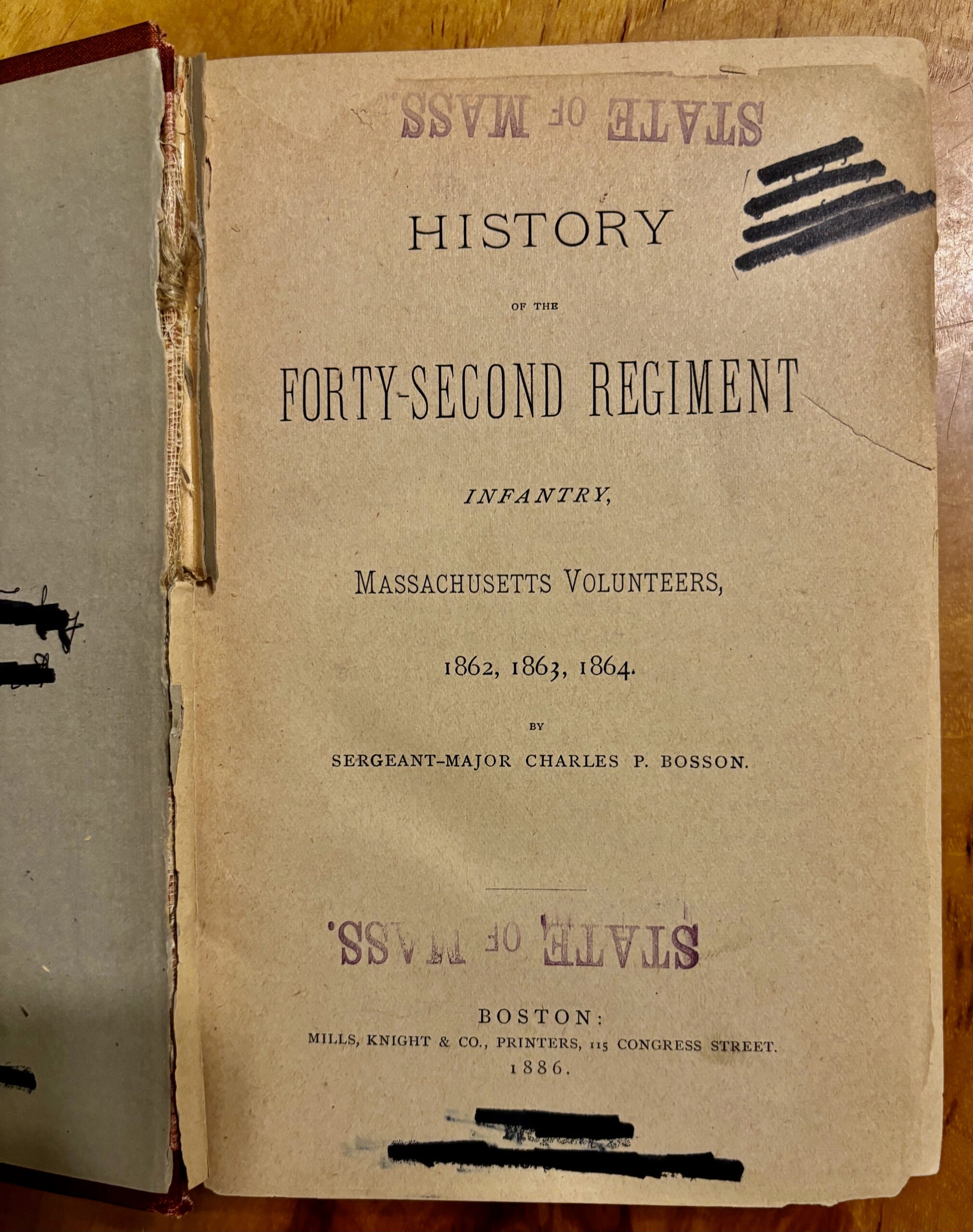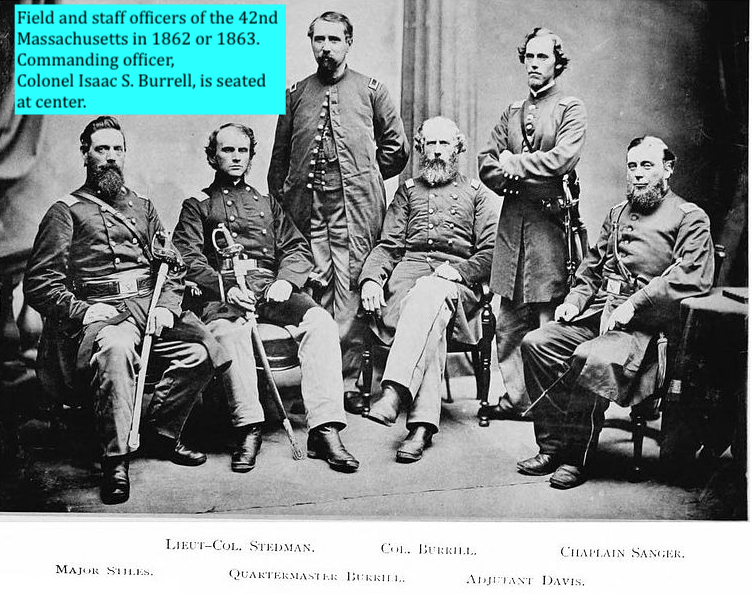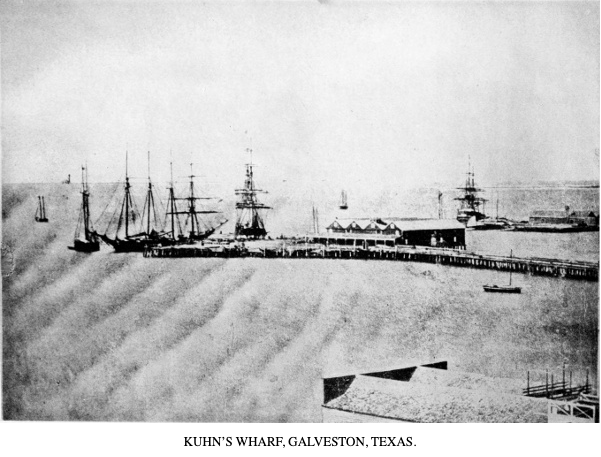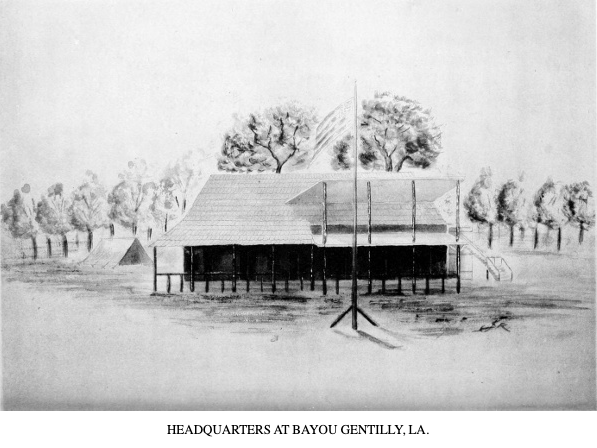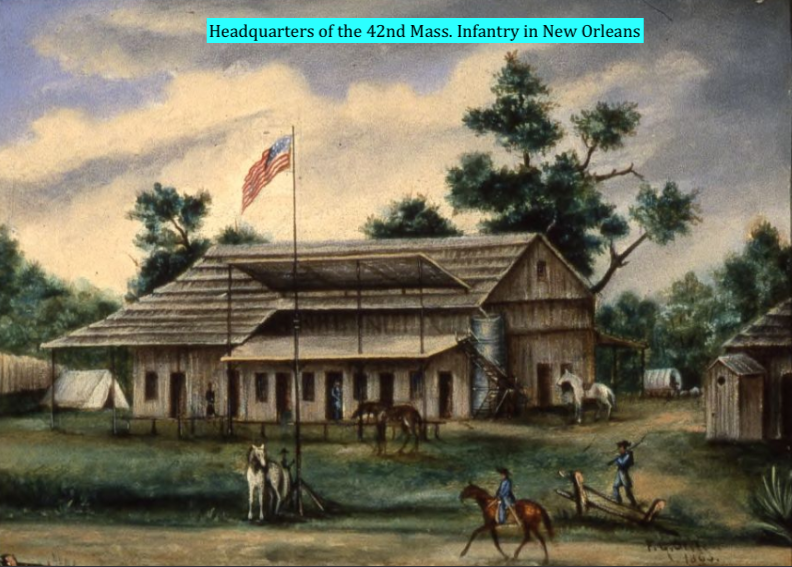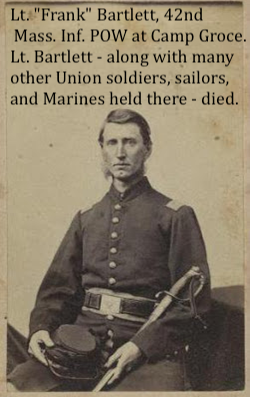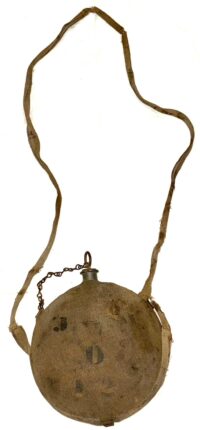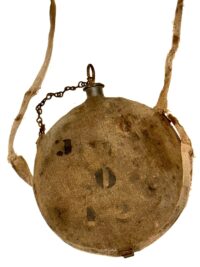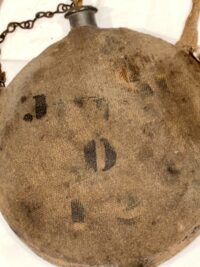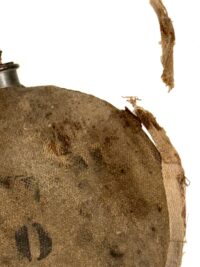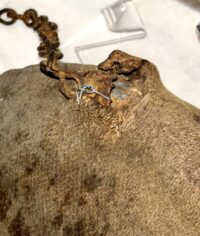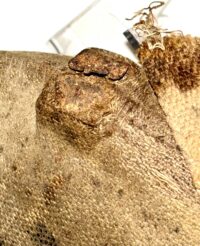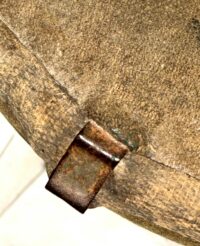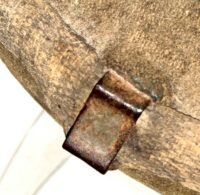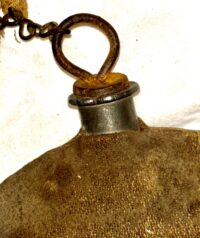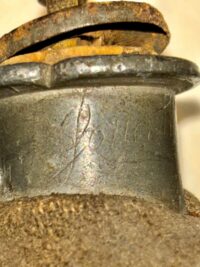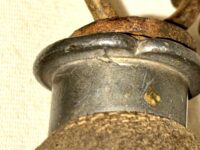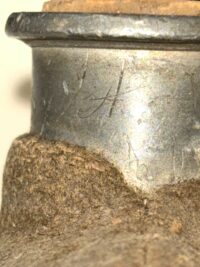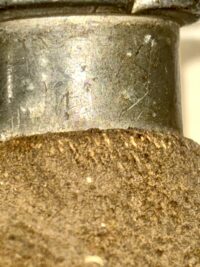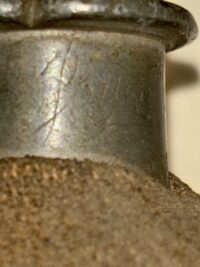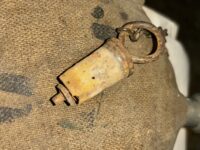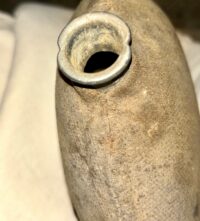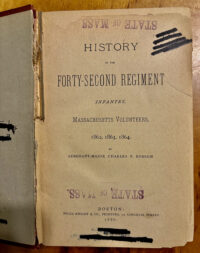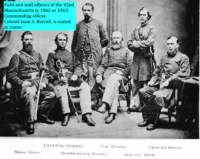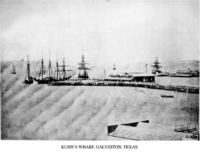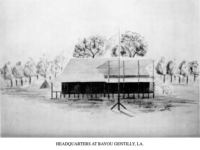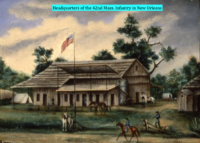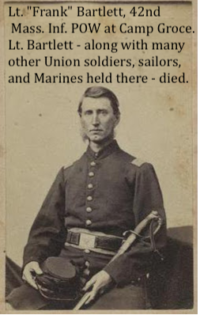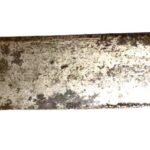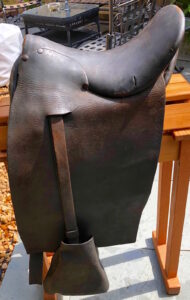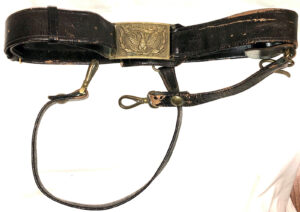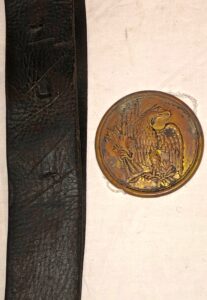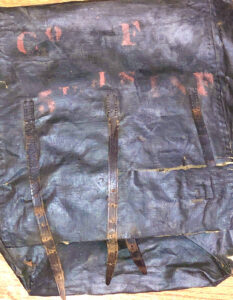M1858 Smoothside Canteen Id’d on the Spout and on Canteen Cover – Jonathan G. Wight Co. D 42nd Massachusetts Infantry
SOLD
M1858 Smoothside Canteen Id’d on the Spout and on Canteen Cover – Jonathan G. Wight Co. D 42nd Massachusetts Infantry – Of the many Civil War canteens we have had and seen, only a few are definitively identified to a specific soldier; this canteen is one of those rare examples of a M1858 smoothside that is definitively id’d. Artfully carved in the pewter mouthpiece, in period script, is the following:
“Jonathan G. Wight”
Private Wight, a young carpenter, from Medfield, Massachusetts, enlisted in the army, at the rank of private, on August 2, 1862; in September, he was assigned to Co. D of the 42n Mass. Infantry. Wight served about one year with the 42nd, and was captured, during the Galveston, Texas campaign, in early January, 1863; he would be paroled, one month later. Wight left the service in August, 1863. According to war time records, the company commanding officer: “Colonel Burrell and staff with Companies “D”, “G” and “I” proceeded on the transport SAXON via Ship Island to New Orleans, reaching that city Dec. 16. On the following day they arrived at Carrollton and went into quarters at Camp Mansfield. Ordered to Galveston, Texas, to cooperate with the blockading fleet, Colonel Burrell with his three companies arrived at that city on Christmas Day, 1862. Taking possession of the city and erecting some works for its defense, on New Year’s Day, 1863, they were attacked by a force which had crossed over from the mainland. Taking refuge on Kuhns’ Wharf, after a gallant defense Colonel Burrell and his three companies were forced to surrender to the Confederate commander General Magruder.” The canteen remains in overall fair to good condition; the cover retains its original stenciling that has Private Wight’s initials, the company designation “D” and the number “42”. The original, full length, cotton strap remains, in its entirety, although it is broken, in one place. Two of the strap guides are rusted with little remaining; the one to which the stopper chain was attached, now has a small length of modern wire to attach the chain. The rusting may have occurred, in the period of use, due to Wight’s regiment posting to the humid, salt air, Gulf region his subsequent, POW confinement. The complete original stopper and chain remain, in good condition. Included in the purchase of this canteen will be an 1886 copy of the Regimental History of the 42nd Mass.
Jonathan G. Wight
| Residence Medfield MA; a 23 year-old Carpenter.
Enlisted on 8/26/1862 as a Private. On 9/20/1862 he mustered into “D” Co. MA 42nd Infantry He was Mustered Out on 8/20/1863 at Readville, MA He was listed as: * POW 1/1/1863 Galveston, TX (Paroled) * Paroled 2/18/1863 (place not stated) |
42nd MA Infantry
( 9-mos )
| Organized: Camp Meigs, Readville, MA on 11/11/62 Mustered Out: 8/20/63 at Readville, MAOfficers Killed or Mortally Wounded: 0 Officers Died of Disease, Accidents, etc.: 2 Enlisted Men Killed or Mortally Wounded: 4 Enlisted Men Died of Disease, Accidents, etc.: 44 (Source: Fox, Regimental Losses) |
| From | To | Brigade | Division | Corps | Army | Comment |
| Dec ’62 | Jan ’63 | Sherman’s | Army and Dept of the Gulf | |||
| Jan ’63 | Aug ’63 | 2 | 2 | 19 | Army and Dept of the Gulf | Mustered Out |
The 42nd Regiment, Massachusetts State Militia mustered into Federal service as the 42nd Massachusetts Volunteer Infantry in November 1862. The regiment left Massachusetts for New York on November 11; sailed December 2 for New Orleans, La. (Cos. “D,” “G” and “I”) on the steamer “Saxon”; arrived at Ship Island December 14, and at New Orleans December 16. Companies “D,” “G” and “I” again moved on the Steamer “Saxon” to Galveston, Texas, December 19-24, 1862, and occupied the city of Galveston on December 24. The three companies were then involved in the Battle of Galveston, January 1, 1863, putting up a brave defense on Kuhn’s Wharf, until their reluctant surrender. The soldiers in the 42nd were taken prisoner; the enlisted men were soon paroled but the officers spent time in Houston and Huntsville, TX, before being sent to Camp Groce, a POW camp in Hempstead, TX. It was at Camp Groce that Lt. Bartlett – along with many other Union soldiers, sailors, and Marines held there – died.
FORTY-SECOND REGIMENT
MASSACHUSETTS VOLUNTEER MILITIA (INFANTRY)
NINE MONTHS
| The 42d Regt. Mass. Vol. Mil. was one of the new militia
units raised to fill the quota of Massachusetts under the call of Aug. 4, 1862, for 300,000 men to serve nine months. Its nucleus was the newly organized 2d Regt. Mass. Vol. Mil. As there was already a 2d Regt. Mass. Vol. Inf. in the service, this new unit was named the 42d Regt. in order to avoid the duplication of numbers. The regiment was recruited at Camp Meigs, Readville, Brig. Gen. R. A. Pierce being commander of the camp. The various companies were mustered in between Sept. 13 and Oct. 14, 1862, while the field and staff were not mustered until Nov. 11. Under command of Col. Isaac S. Burrell the regiment left, Nov. 21, for Camp Banks, Long Island, N. Y., where the expedition for Louisiana was being organized. Here on the 3d of December it took transports for New Orleans. Colonel Burrell and staff with Companies “D”, “G” and “I” proceeded on the transport SAXON via Ship Island to New Orleans, reaching that city Dec. 16. On the following day they arrived at Carrollton and went into quarters at Camp Mansfield. Ordered to Galveston, Texas, to cooperate with the blockading fleet, Colonel Burrell with his three companies arrived at that city on Christmas Day, 1862. Taking possession of the city and erecting some works for its defense, on New Year’s Day, 1863, they were attacked by a force which had crossed over from the mainland. Taking refuge on Kuhns’ Wharf, after a gallant defense Colonel Burrell and his three companies were forced to surrender to the Confederate commander General Magruder. In recognition of the gallantry with which he had defended his post, Colonel Burrell was allowed to retain his sword. The enlisted men were paroled Feb. 18, but the officers were not finally released and exchanged until July 22, 1864. Lieut. Col. Stedman with Companies “A”, “B”, and “F” on the transport QUINCY reached Camp Mansfield, Carrollton, Dec. 29. Companies “E” and “K” on the CHARLES OSGOOD arrived Jany. 2, while Companies “C” and “H” on the SHETUCKET did not reach camp until Jany. 15. The seven companies which now composed the regiment were made a part of Farr’s (2d) Brigade, T. W. Sherman’s (2d) Division, l9th Corps. Captain Leonard with Companies “C ” and “H ” was employed during the first half of the year 1863 at Camp Parapet, the men serving as engineers and constructing a redoubt at that place. Here Captain Leonard organized a colored regiment largely officered by men from the 42d Mass. and known as the 1st Louisiana Engineers. Companies “A”, “B”, “F”, and “K” under command of Lieut. Col. Stedman were sent to Bayou Gentilly a dozen miles northeast from New Orleans and near Lake Ponchartrain. These companies were detached at various times and assigned to duty at different places. In June a detachment of 100 men was sent to Brashear City on the Opelousas Railroad and attached to a battalion of the 47th Regiment. On June 23 the garrison at Brashear City was captured and with it forty-six men of the 42d Regiment. About June 21 the headquarters of the regiment were transferred to Lafayette Square, New Orleans. About the 1st of July the regiment was transferred to the Custom House and there remained until the middle of the month when it was moved across the Mississippi River to Algiers and spent a fortnight picketing the Opelousas Railroad. On Aug. 1 it embarked on the steamer CONTINENTAL bound for home. After many vicissitudes it reached Boston via Providence, R. I., Aug. 10. Here the men were furloughed until the 20th when they assembled for the last time at Readville where they were paid off and discharged. The Battle of Galveston During the fall of 1862, President Abraham Lincoln ordered that all of the major ports along the Texas Gulf coast be blockaded to prevent the movement of supplies and arms to the Confederate Army. A squadron of eight Union ships entered Galveston’s harbor on October 4, 1862 and demanded the surrender of the city — the most crucial port in Texas at the time. Confederate troops retreated to the mainland, and by December, Union soldiers occupied Kuhn’s Wharf and patrolled the city streets. General John B. Magruder became the new leader of the Confederate forces in Texas in November 1862. One of his top priorities was to regain control of Galveston and its bay. Magruder planned a two-sided attack. First, his infantry of 1,000 men would cross the railroad bridge and open fire on Union troops at the wharves. At the same time, two Confederate gunboats would attack the blockaded Union warships in Galveston Bay. Just before dawn on New Year’s Day, 1863, Magruder ordered his men to attack. The Union soldiers on land were well-protected at their positions on the wharf, and their huge ship cannons succeeded in pushing Confederate troops back. The Union navy, however, was not prepared for the Confederate gunboats, the Neptune and the Bayou City. Men on both boats began shooting at the Union ship, the USS Harriet Lane. The Harriet Lane sank the Neptune, but was broadsided by the Bayou City. The crew of the Bayou City managed to overtake the Union gunners, and after boarding the enemy ship, Confederate soldiers forced its surrender. After the Harriet Lane was captured, Union Commander William Renshaw made the decision to retreat. The Union ships left Galveston Harbor, but the foot soldiers at the wharves were left behind. The stranded men were also forced to surrender to the Confederate army. During the Battle of Galveston, the Confederates managed to capture six Union ships, sink one, and run another aground. A total of 300 – 400 Union prisoners were taken. In turn, the number of killed or wounded Confederate soldiers was less than 150, and only one Confederate ship was lost. Galveston remained under Confederate control until the Civil War ended in 1865. |
42nd Massachusetts Infantry Regiment
| Active | September 13, 1862 – August 20, 1863 July 14, 1864 – November 11, 1864 |
| Country | United States |
| Allegiance | Union |
| Branch | Infantry |
| Part of | In 1863: 2nd Brigade (Farr’s), 2nd Division (Thomas Sherman’s), XIX Corps, Army of the Gulf |
| Engagements | American Civil War |
| Commanders | |
| Colonel | Isaac S. Burrell |
| Insignia | |
| XIX Corps (2nd Division) badge | |
| Massachusetts U.S. Volunteer Infantry Regiments 1861-1865 | ||||
|
The 42nd Regiment Massachusetts Volunteer Infantry was a regiment of infantry that served two tours in the Union Army during the American Civil War. The unit was first formed in September 1862 in response to President Abraham Lincoln’s call for 300,000 men to serve for nine months.[1]
9 months term
Organized and mustered in at Camp Meigs in Readville, Massachusetts, just outside of Boston, the 42nd Massachusetts did not depart for the south until November 11, 1862 due to a slow recruiting process and the reassignment of some companies to other units.[2]
The regiment was assigned to the Army of the Gulf commanded by Major General Nathaniel P. Banks and saw action in Texas and Louisiana. On January 1, 1863, three companies of the 42nd Massachusetts, led by Col. Burrell, took part in the Battle of Galveston. These companies were forced to surrender to Confederate forces along with other Union troops and were taken prisoner. They were paroled on February 18 and eventually rejoined the rest of the regiment.[3] The various companies were detailed to different locations and took part in garrison and engineering efforts in Louisiana during the spring of 1863. Company K was assigned to the engineering department of the XIX Corps and carried out bridge building and the removal of naval mines in various waterways. In this capacity, Company K took part in the Expedition to Bayou Teche and the Siege of Port Hudson.[3]
The other companies served picket duty in the vicinity of Bayou St. John for the first half of 1863. Captain Orville W. Leonard, commanding Company C, was instrumental in the establishment of the 1st Louisiana Engineers, an African-American unit commanded by white officers. Most of the officers of the Louisiana unit were enlisted men commissioned from the 42nd Massachusetts.[4] When the first term of the 42nd Massachusetts ended, the regiment left Louisiana on August 8, 1863 and were mustered out at Camp Meigs on August 20.[4] The unit lost four men killed or mortally wounded in action and 46 due to disease during their first term.[3]
100 days term
The 42nd Massachusetts enlisted for a second term of service in response to the call for volunteers to serve 100 days in the defense of Washington. The first companies were mustered in at Camp Meigs on July 14, 1864. They performed garrison and picket duty in Alexandria, Virginia and Great Falls, Maryland and were mustered out of service on November 11, 1864.[5]


